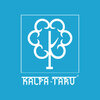


i
Casagrand
Filter interviews by
Casagrand Senior Engineer Interview Questions and Answers
Casagrand Senior Engineer Interview Experiences
1 interview found
I applied via Referral

(1 Question)
- Q1. Introduction, previous experience
(1 Question)
- Q1. Past experience and rates
Interview Preparation Tips
Top trending discussions






Interview questions from similar companies

Interview Questionnaire
1 Question
- Q1. Past work experience and some technical work related questions

I applied via Company Website and was interviewed before Oct 2020. There were 4 interview rounds.
Interview Questionnaire
1 Question
- Q1. Draw SFD & BMD for a simply supported load.
- Ans.
SFD & BMD for a simply supported load
SFD is a diagram that shows the variation of shear force along the length of a beam
BMD is a diagram that shows the variation of bending moment along the length of a beam
For a simply supported load, the SFD will be a straight line with a constant slope
The BMD will be a parabolic curve with the maximum value at the center of the beam
The SFD and BMD can be calculated using equations an
Interview Preparation Tips

I applied via Recruitment Consulltant
(1 Question)
- Q1. What is SI unit of inductance
- Ans.
The SI unit of inductance is Henry (H).
Inductance is the property of an electrical circuit that opposes a change in current.
It is measured in Henry (H) and is named after American scientist Joseph Henry.
Inductance is used in various electrical components such as transformers, inductors, and motors.
The symbol for inductance is L and it is measured in units of Henry per meter squared (H/m^2).
Highmast and street lights , Towers , Control panel trouble shoot
Interview Preparation Tips
- Electrical Maintenance
- Building Construction
- Electrical Machines
- Switch gears
- Business development
- Safety Management System
- Operating Systems


(1 Question)
- Q1. Civil related ,like building, industry, residential etc.
(1 Question)
- Q1. Profile and salary How to grow your team. How to work new organisation.
Interview Preparation Tips

I applied via Naukri.com and was interviewed in Mar 2024. There were 2 interview rounds.
(2 Questions)
- Q1. One meter how much inch
- Ans.
One meter is equal to 39.37 inches.
One meter is equivalent to 100 centimeters.
One inch is equal to 2.54 centimeters.
To convert meters to inches, multiply by 39.37 (100 * 2.54).
- Q2. Steel density value and units
- Ans.
Steel density is typically around 7.85 g/cm^3.
Steel density is commonly expressed in grams per cubic centimeter (g/cm^3).
The density of steel can vary depending on the specific alloy composition.
For example, the density of stainless steel is around 7.9 g/cm^3, while carbon steel is around 7.85 g/cm^3.
(1 Question)
- Q1. Explain your privious jobs about your response

I applied via Walk-in and was interviewed in Feb 2021. There were 4 interview rounds.
Interview Questionnaire
5 Questions
- Q1. What is meaning of Quaity?
- Ans.
Quality refers to the degree of excellence or superiority of a product or service.
Quality is a measure of how well a product or service meets customer expectations and requirements.
It involves ensuring that the product or service is free from defects or errors.
Quality also includes factors such as reliability, durability, and performance.
Quality can be subjective and may vary depending on the context and industry.
Examp...
- Q2. What is the tolerance of sand bulkage?
- Ans.
The tolerance of sand bulkage refers to the acceptable variation in the volume of sand when it is compacted.
Tolerance of sand bulkage is typically expressed as a percentage.
It is important to measure and control sand bulkage to ensure consistency in construction materials.
The acceptable tolerance may vary depending on the specific application and industry standards.
For example, in concrete production, the tolerance for...
- Q3. What is the responsible of QA and how to ensure ?
- Q4. Difference between qa and qc ?
- Ans.
QA focuses on preventing defects while QC focuses on identifying and fixing defects.
QA is a process-oriented approach that aims to prevent defects from occurring in the first place.
QC is a product-oriented approach that focuses on identifying defects in the final product.
QA involves activities such as planning, designing, and implementing processes to ensure quality.
QC involves activities such as testing, inspecting, a...
- Q5. What is QMS ?
- Ans.
QMS stands for Quality Management System.
QMS is a set of policies, processes, and procedures required for planning and execution of quality control.
It ensures that products or services meet customer requirements and comply with regulations.
QMS includes activities such as quality planning, quality control, quality assurance, and quality improvement.
Examples of QMS include ISO 9001, Six Sigma, and Total Quality Managemen
Interview Preparation Tips


(2 Questions)
- Q1. What is opc in construction work
- Ans.
OPC stands for Ordinary Portland Cement, which is a widely used type of cement in construction work.
OPC is a type of cement that is commonly used in the construction industry.
It is known for its high strength and durability.
OPC is made by grinding clinker, gypsum, and other materials.
It is used in various applications such as concrete, mortar, and plaster.
OPC is available in different grades, such as OPC 33, OPC 43, an
- Q2. Nothing Nothing Nothing
Interview Preparation Tips


(1 Question)
- Q1. All related your experience
(1 Question)
- Q1. Hr type question


Round was quite easy, for mechanical they had turbo machinery and heat transfer questions and basic SOM,TOM,MD,MF
(2 Questions)
- Q1. 1. Tell me about yourself
- Q2. 2. How lift works and how ACs work and different types of ACs
- Ans.
Lifts work on the principle of pulleys and counterweights while ACs work on the principle of refrigeration.
Lifts use a motor to move a counterweight that balances the weight of the lift car and its occupants.
ACs use a compressor to compress and expand refrigerant gas to absorb and release heat.
Types of ACs include window ACs, split ACs, central ACs, and portable ACs.
Window ACs are mounted on windows and cool a single r...
Interview Preparation Tips
Casagrand Interview FAQs
Tell us how to improve this page.
Casagrand Interviews By Designations
- Casagrand Civil Site Engineer Interview Questions
- Casagrand Site Engineer Interview Questions
- Casagrand CRM Executive Interview Questions
- Casagrand Project Engineer Interview Questions
- Casagrand Assistant Manager Interview Questions
- Casagrand QA QC Engineer Interview Questions
- Casagrand Telecaller Interview Questions
- Casagrand Senior Manager Interview Questions
- Show more
Casagrand Senior Engineer Interview Process
based on 1 interview
Interview experience
Senior Engineer Interview Questions from Similar Companies
Casagrand Senior Engineer Reviews and Ratings
based on 5 reviews
Rating in categories
|
Senior Executive
252
salaries
| ₹2 L/yr - ₹5.1 L/yr |
|
Assistant Manager
244
salaries
| ₹2.8 L/yr - ₹8 L/yr |
|
Executive
90
salaries
| ₹1.8 L/yr - ₹5 L/yr |
|
Site Engineer
82
salaries
| ₹1.8 L/yr - ₹5.5 L/yr |
|
Senior Site Engineer
69
salaries
| ₹2.4 L/yr - ₹5.5 L/yr |

Lodha Group

Sobha

Godrej Properties

Cushman & Wakefield
- Home >
- Interviews >
- Casagrand Interview Questions >
- Casagrand Senior Engineer Interview Questions









